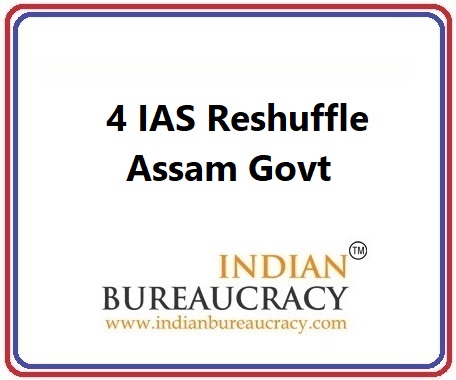The Commission for Air Quality Management in National Capital Region and Adjoining Areas, on 10.06.2021 has provided a framework to the states of Punjab, Haryana, Uttar Pradesh and Rajasthan, along with the NCT of Delhi, for control/elimination of crop residue burning and directed to draw up the state specific action plans based on the major contours of the framework. The commission on 16.09.2021 directed the Chief Secretaries of the states of Punjab, Haryana, Uttar Pradesh and Rajasthan, along with the NCT of Delhi to effectively implement the framework and the detailed action plan.
Further, Government is implementing a special scheme ‘Promotion of Agricultural Mechanization for In-Situ Management of Crop Residue in the States of Punjab, Haryana, Uttar Pradesh and NCT of Delhi’ to support the efforts of the governments of Haryana, Punjab, Uttar Pradesh and the NCT of Delhi towards prevention of burning of crop residue and to subsidize machinery required for in-situ management of crop residue.
As per the System of Air Quality and Weather Forecasting (SAFAR), Ministry of Earth Sciences, estimated average contribution of biomass burning to PM2.5 levels in Delhi was 13% for both years i.e. 2020 (10 October – 03 December) and 2021 (10 October- 23 November) with maximum estimated contribution reaching up to 42% in 2020 and 48% in 2021.
Active Fire Event (AFE) count due to paddy crop residue burning, provided by Consortium for Research on Agro ecosystem Monitoring and Modeling from Space (CREAMS), IARI, indicates reduction of AFE in 2021, by 14% in Punjab, while increase by 66.3% in Haryana, as compared to AFE count observed in 2020. Though, Net AFE count in Punjab and Haryana has decreased by 10% in 2021, as against 2020. District-wise AFE count for the States of Punjab and Haryana for 2020 and 2021 is enclosed as Annexure-I.
Paddy straw is used as conventional animal feed in most parts of the country. However, it can be better utilized by making it nutritional feed material by treating with urea solution. The paddy straw is also used for paper making. However, it is less preferred by the paper industry due to high silica content causing chocking of blast furnaces, low fiber strength, less pulp yield, yellowness in pulp and requirement of large storage space etc.
A committee was constituted by ICAR to analyze various ex-situ crop residue management options for their technical feasibility and economic viability and brought out document entitled ‘Ex-situ Crop Residue Management Options’.
This information was given by the Minister of State for Environment, Forest & Climate Change, Shri Ashwini Kumar Choubey in a written reply in Lok Sabha today.
Annexure-I
District-wise AFE count for the state of Punjab
(15 September-30 November)
| District | 2020 | 2021 |
| Amritsar | 3067 | 2174 |
| Barnala | 5342 | 4326 |
| Bathinda | 5239 | 4481 |
| Faridkot | 4734 | 3953 |
| Fatehgarh Sahib | 1536 | 1724 |
| Fazilka | 2616 | 2389 |
| Firozpur | 8525 | 6289 |
| Gurdaspur | 2132 | 1396 |
| Hoshiarpur | 388 | 331 |
| Jalandhar | 1951 | 2548 |
| Kapurthala | 1886 | 1798 |
| Ludhiana | 5065 | 5817 |
| Mansa | 3786 | 3217 |
| Moga | 7421 | 6515 |
| Muktsar | 5072 | 4598 |
| Pathankot | 13 | 6 |
| Patiala | 6433 | 5426 |
| Rupnagar | 205 | 307 |
| Sangrur | 11727 | 9389 |
| S.A.S. Nagar | 127 | 148 |
| SBS Nagar | 132 | 355 |
| Tarn Taran | 5605 | 4117 |
| Total | 83002 | 71304 |
District-wise AFE count for the state of Haryana
(15 Sep-30 Nov)
| District | 2020 | 2021 |
| Ambala | 346 | 308 |
| Bhiwani | 5 | 12 |
| CharkhiDadri | 0 | 0 |
| Faridabad | 1 | 3 |
| Fatehabad | 880 | 1479 |
| Gurugram | 0 | 0 |
| Hisar | 56 | 245 |
| Jhajjar | 6 | 7 |
| Jind | 347 | 919 |
| Kaithal | 840 | 1157 |
| Karnal | 592 | 955 |
| Kurukshetra | 406 | 538 |
| Mahendergarh | 0 | 0 |
| Mewat | 0 | 0 |
| Palwal | 46 | 115 |
| Panchkula | 0 | 0 |
| Panipat | 55 | 254 |
| Rewari | 0 | 0 |
| Rohtak | 50 | 78 |
| Sirsa | 357 | 551 |
| Sonipat | 72 | 219 |
| Yamunanagar | 143 | 147 |
| Total | 4202 | 6987 |





